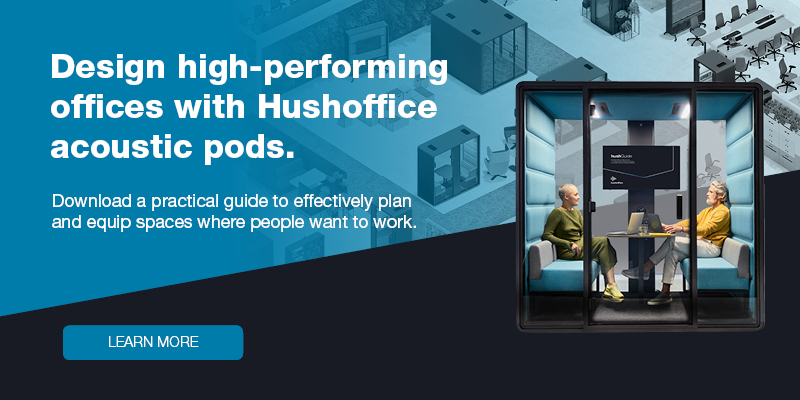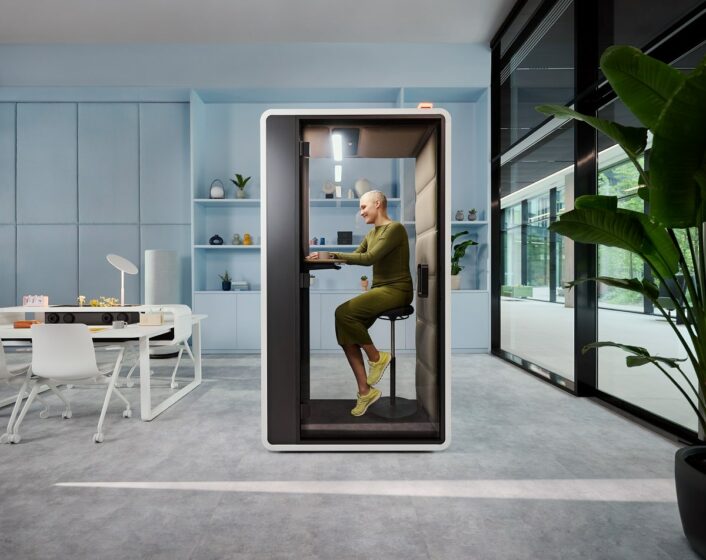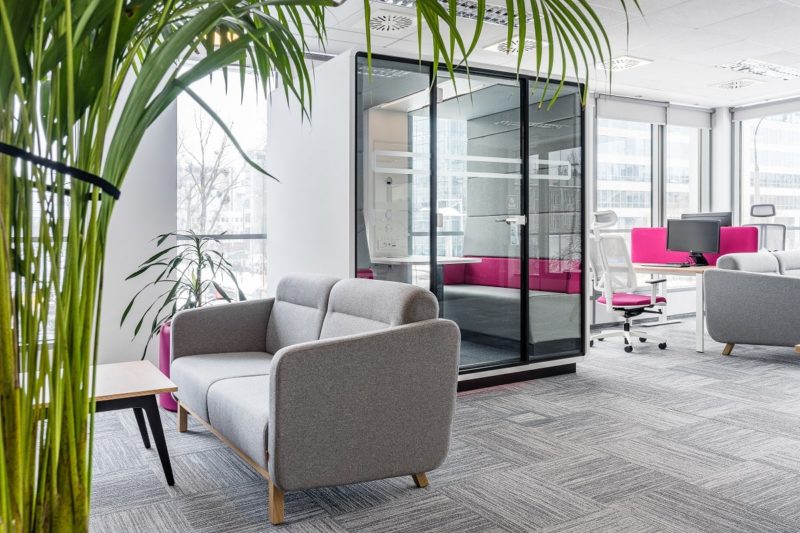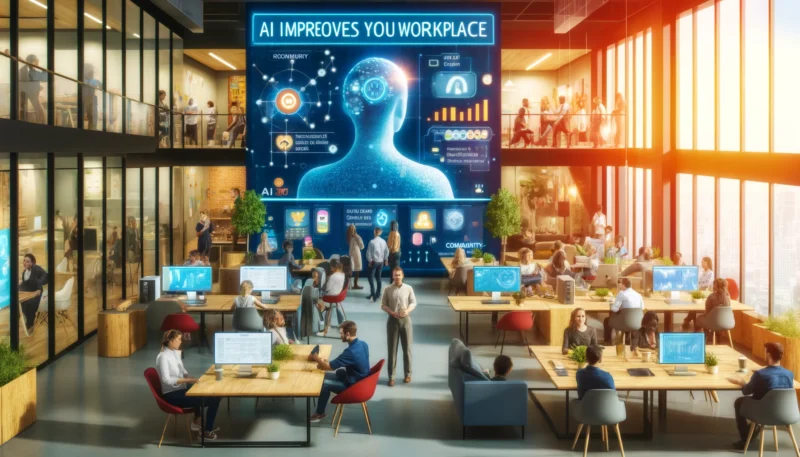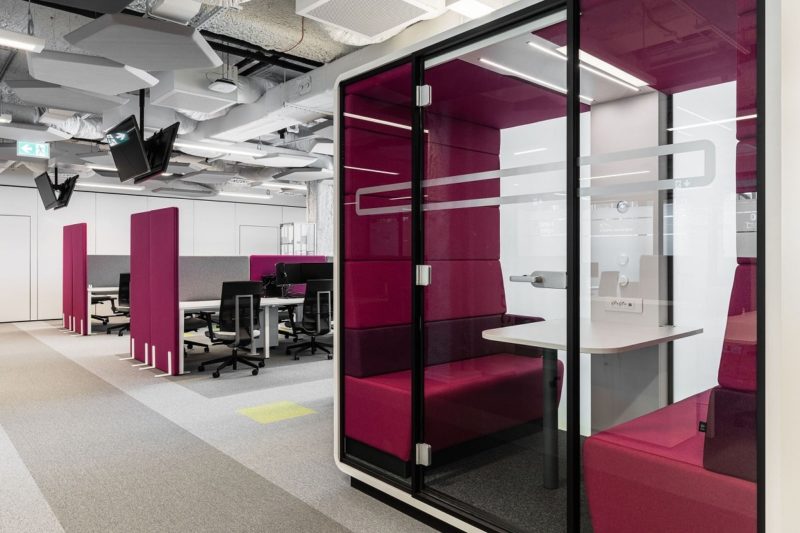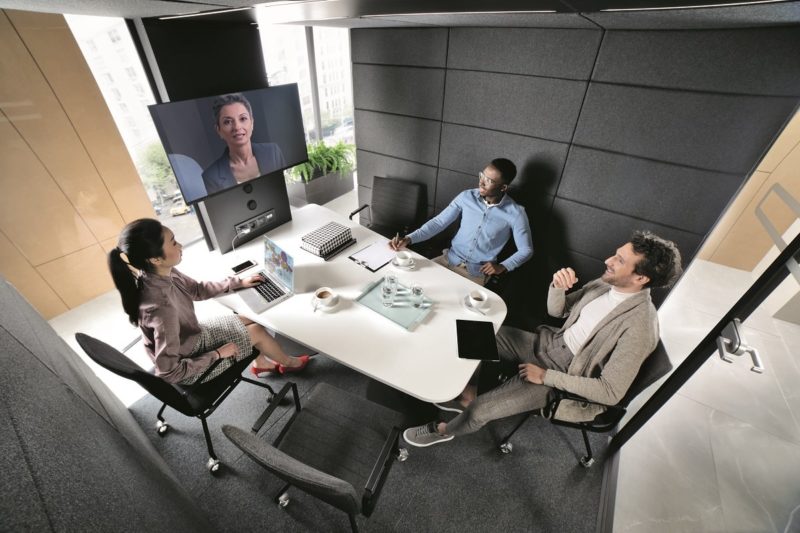Why create an inclusive workplace?
- Posted on: 1 September 2024
- By: Hushoffice Team
Inclusivity is a big topic in today’s work landscape. What does it really mean? How can the office’s design support it? Let’s delve in.
Inclusive workplace – tl;dr
- Diversity is about attracting employees from varied backgrounds, while inclusivity ensures that diversity of people feel welcomed, respected, and valued.
- Why is diversity a worthwhile goal? It is proven to foster innovation. Companies with above-average leadership diversity report innovation revenue 19 percentage points higher than companies with below-average diversity on their management teams. As such, 96% of leaders call D&I a strategic priority today.
- Cognitive differences, or neurodiversity, is one of the most rewarding forms of diversity to attract and develop, as cognitively diverse teams perform better in complex, uncertain situations. In the office, the most neuro-inclusive approach to the layout is one that caters to neurodiversity. Its spaces consider the sensory and physical needs of all employees by featuring affordances and elements such as quiet booths and wheelchair-accessibility.
What is inclusivity in the workplace?
Inclusivity workplaces boast a culture where every employee feels a sense of belonging and is encouraged to participate fully. It involves implementing practices and policies that ensure all individuals have equal opportunities to contribute and succeed, regardless of their differences.
Is inclusivity the same as diversity?
Diversity in the office means having employees from a variety of backgrounds, like race, age, and disability status. On the other hand, inclusivity is about creating an environment where this diversity of people feels welcomed, respected, and valued.
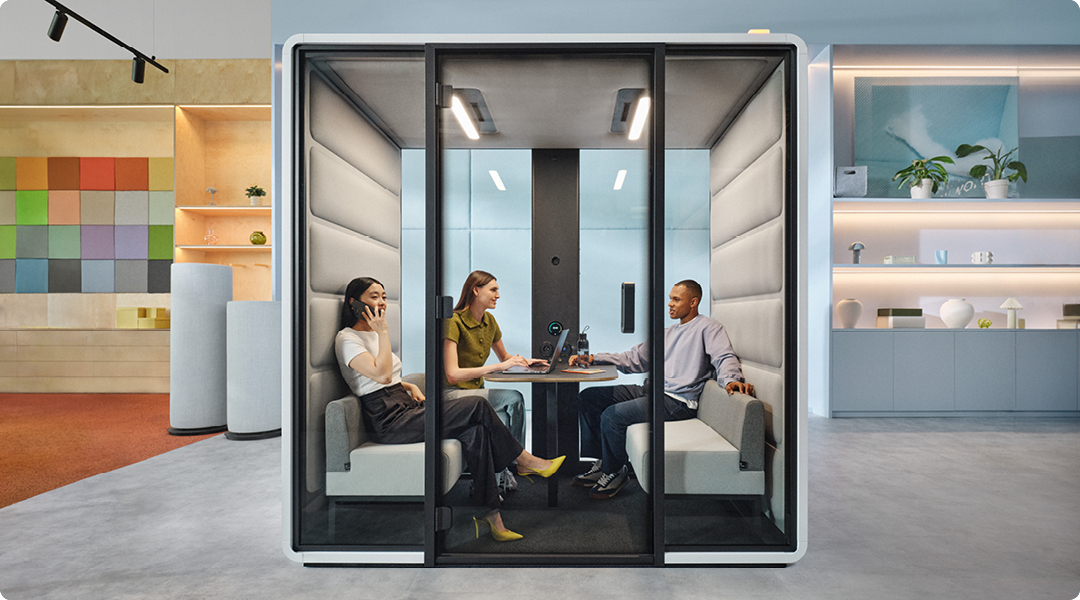
The norm of inclusion can only be set by strong, deliberate leadership.
It starts at the top. Leaders set the tone for an organization. When they champion inclusion through words and actions, they signal to everyone its priority. Leading by example is the way — rigorously promoting different perspectives and carefully accommodating varied needs.
Neurodiversity. Neurotypicality. Neuroinclusion. How do they compare?
Neurodiversity regards cognitive differences, i.e., conditions like ADHD. Neurotypicality refers to those whose cognition is typical by societal norms. Neuroinclusion is a practice of creating spaces that accommodate the atypical through the feature of, for example, work booths like hushFree.S.
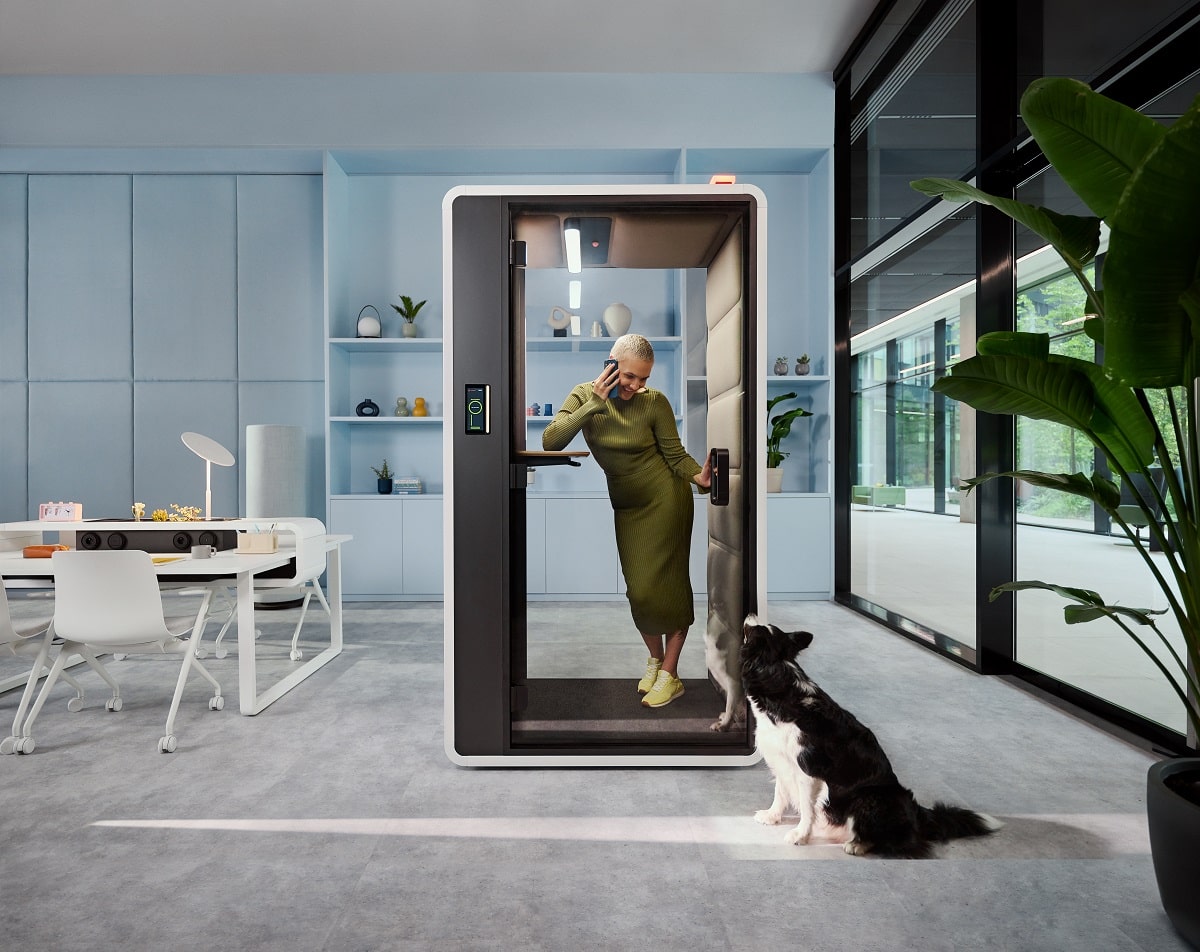
Beyond the neuroatypical; neuroinclusion can accommodate many historically excluded groups.
While a noisy open office floor is anxiety-inducing for highly sensitive employees, it can also be challenging for people with hearing impairments, or those who struggle to think and communicate effectively in noisy spaces due to their unique cultural upbringing.
Read more: How to support highly sensitive people (HSPs) in your office.
Why is it worth pursuing a diversity policy in the company?
A policy of diversity is proven to foster innovation! It can boost employee satisfaction and engagement by creating a positive and psychologically safe environment where people feel a sense of belonging and the drive to excel. Indeed, 96% of CEO’s call D&I a strategic priority.
Diversity → Innovation.
Diversity means a true collection of perspectives, melding. The richer the mix, the stronger the spark: precious novel creativity. When many ways-of-thinking come together, people challenge one another, breaking out of the usual patterns, leading to more inspired problem-solving.
Teams solve problems faster when they’re more cognitively diverse.
“Multivariate” teams are better in complex, uncertain situations. The most varied and eclectic team may find the brightest synthesis thanks simply to their wide-ranging make-up. Best yet, if they meet up in a large office booth like hushFree.L where fledgling ideas can be developed in private.

Inclusivity can be a talent magnet.
83% of Gen Z say a company’s commitment to D&I is important when choosing an employer. In fact, the majority of people want to work for companies whose values they share. 54% would take a pay cut for this, while 56% wouldn’t even consider working for a company they disagreed with.
Universal Design (UD) is not synonymous with inclusive design.
Both approaches seek to enhance accessibility, but they differ in their methodologies and scope.
User-centered vs. standardized approach.
Inclusive design is user-centered. It focuses on addressing specific needs of diverse users through tailored solutions. UD aims for a standardized approach, creating environments usable by everyone without the need for adaptation.
Customization vs. generalization.
Inclusive design often adapts solutions to particular groups, often marginalized ones. Universal design, on the other hand, generalizes solutions to make them broadly accessible, applying principles that aim to meet the needs of the widest range of users.
Process vs. outcome.
Inclusive design is an ongoing process that involves continuous user feedback and iteration, while universal design seeks to create a final environment inherently accessible to all users from the outset.
How to create an office that works for everyone? Adaptability is key.
When furniture is user-adjustable and mobile, the space can be tailored to individuals. Employees can modify their workstations toward ergonomic ease, reconfiguring each setup per different work styles, from collaborative to focused tasks.
Embedding understanding into workspace design. Empathic architecture.
Inclusive design weaves empathy right into the office’s very fabric. When employees arrive each morning, they are embraced by a welcoming lobby. A wheelchair-accessible call booth like hushFree.Access.M sits by for convenient use. The feature of so integral a space gives each abrupt call due privacy and comfort, and inclusive of the physically limited by zero threshold flooring and an ergonomic door handle. Mid-day, entering a private meeting booth like hushFree.Access.L, a different employee, the introspective creative stressed by noise finds peace. The booth is a safe space where to share freely without fear. Empathic architecture is what we are talking about. Built spaces that are thoughtful and, ultimately, inclusive, supporting well-being at every touch point
– says Mateusz Barczyk, Senior Brand Manager, Hushoffice.
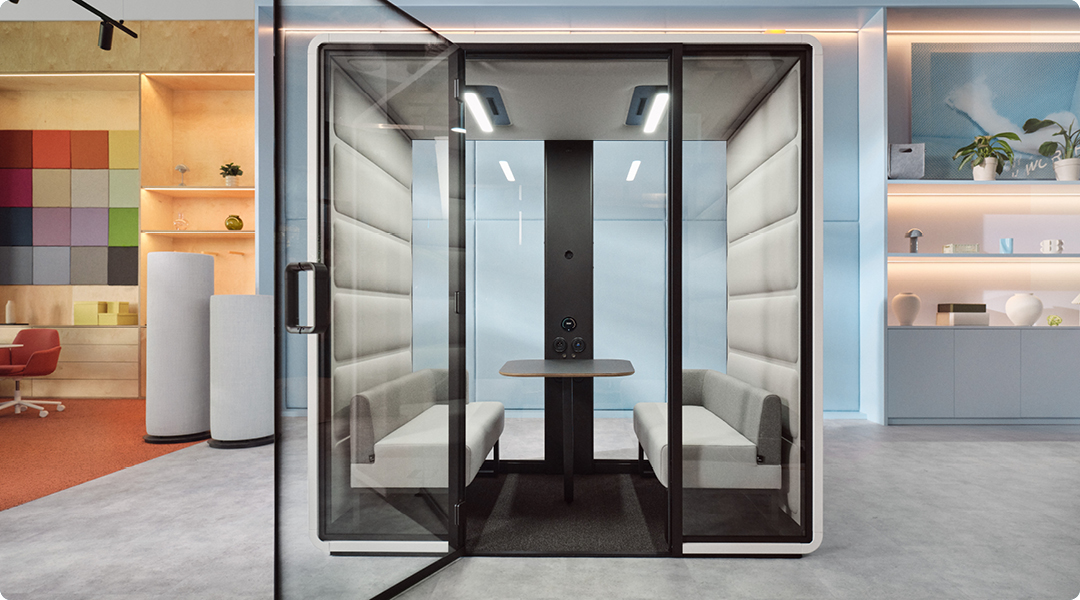
By understanding the emotions, experiences, and sensory needs of those who interact with every key workspace in the office on a daily basis, architects and designers arrive at decisions that are deeply empathic, and immediately respond to user preferences.
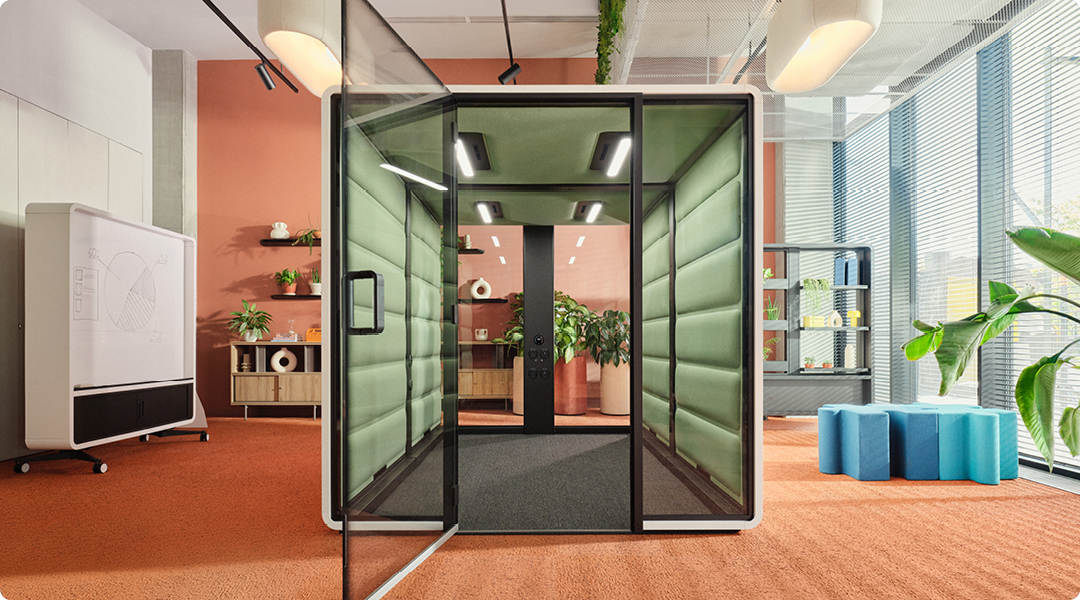
Read more: Get accessible with HushFreeAccess.M and HushFreeAccess.L.
Communication without barriers. Spatial openness promotes openness.
Anonymous feedback, open online forums, cross-functional teams or workshops (a sure remedy to silos), open door policies, and internal newsletters are all sure paths toward more transparency. The following research points may help you think out your team’s next step toward more open communication.
- Research shows that silos are the biggest obstacle to successful collaboration
- Cross-silo teamwork can be promoted by employing “cultural brokers” or employees who connect across divides; encouraging open-ended, unbiased questions exploring others’ thinking; and broadening employees’ views to include more-distant networks
- 83% percent of digitally maturing companies use cross-functional teams, compared with only 71% of developing companies on the digital maturity spectrum and only 55% of early-stage organizations
Proximity as part of team building for better inclusion.
Did you know that just sitting near a high-performer can improve your performance. Indeed, being close to others smoothens collaboration by boosting the chances of reaching out to one another. Proximity is also shown to improve the volume and caliber of communication critical to solving problems.
Proximity is a worthy principle to consider as you refine your office space toward the transparency that makes all feel heard. Naturally, being seated near colleagues bonds them by relational energy. It leads to impromptu conversations. Quick idea exchanges. More finely tuned problem-solving. These are inevitable when your best work mate is within reach. Time together can break down barriers in communication, clarifying it. We simply feel closer to and trustful of those we hang with.
– says Mateusz Barczyk, Senior Brand Manager, Hushoffice.
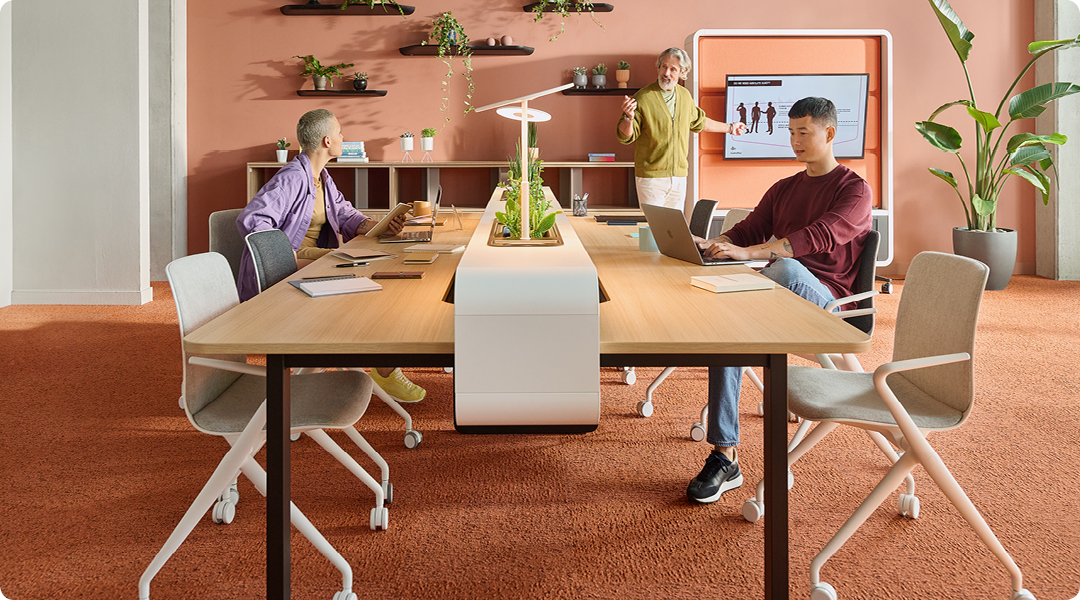
Even small accessibility features can enhance inclusion significantly.
To get an idea of just how many opportunities there are for better accessibility at even the most seemingly minute of interaction points in the office, consider the following list.
Desktop and mobile freestanding space dividers that let employees create a more enclosed workspace in seconds
In addition to sensory considerations, physical accessibility is one of the most important aspects of empathic architecture and design. It ensures that all individuals, regardless of their physical abilities, can use and navigate the space with dignity. An empathic approach to design recognizes that inclusivity starts with eliminating barriers. Any design element that prevents people from fully participating in their environments. By incorporating features such as ramps, wide doorways, tactile signage, and accessible restrooms, we create spaces that are not only functional but also welcoming and respectful of all. In light of this fact, we are so delighted to add two new accessibility booths to our hushFree collection. HushFree.Access.M for up to four people. And hushFree.Access.L for up to six. Both are wheelchair friendly, fully functional work and meeting spaces for dynamic teams
– says Mateusz Barczyk, Senior Brand Manager, Hushoffice.
Hushoffice Frequently Asked Questions
Why does proximity matter when it comes to workspaces in the office?
Working closely together is inherently bonding. Practically speaking, it allows employees to quickly exchange ideas. This allows for immediate feedback, fostering a more naturally collaborative atmosphere.
How are neurodiversity and neurotypicality related?
Neurodiversity refers to the variety of cognitive functioning in individuals. This includes conditions like autism, ADHD, and dyslexia. Neurotypicality describes individuals whose cognitive functioning aligns with societal norms. This matters to office design greatly. For many offices are designed with neurotypical employees in mind only. Open-plan layouts are a perfect example. Without work booths, they do not account for sensory sensitivities.
How do silos relate to organizational transparency?
Research indicates silos are the biggest hindrance to collaboration. To overcome this, cross-silo teamwork should be promoted. Employing cultural brokers and encouraging open-ended, unbiased questions can help. This approach aligns with the practices of 83% of digitally maturing companies, which use cross-functional teams more effectively than less mature organizations.

